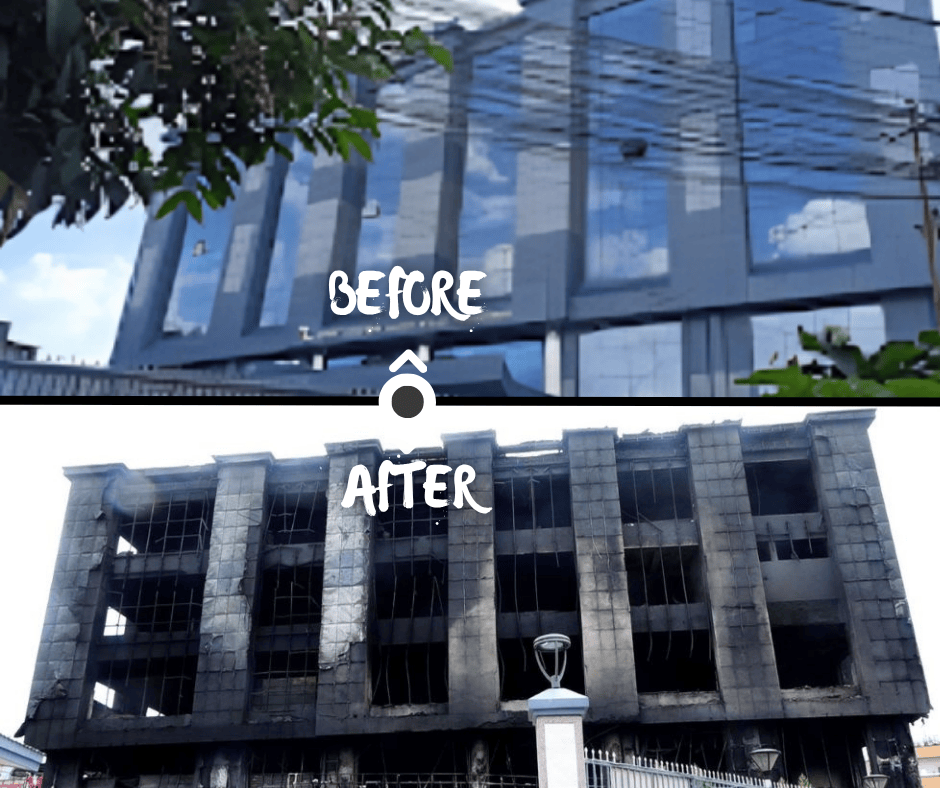
Cristiano Ronaldo becomes the first footballer to be included in the b...
In a landmark development, Cristiano Ronaldo has officially become the first foo...

On the day violence escalated during the Gen-Z demonstrations, groups entered and vandalised several commercial buildings and supermarkets in Kathmandu. At Koteshwor, glass facades were smashed, goods strewn on the pavement and large quantities of produce and stock looted or burned. Local reports documented on-site scenes of broken glass, destroyed produce and damaged store fixtures.
Republica and OnlineKhabar reported that the Koteshwor branch sustained millions in damage (local estimates put Koteshwor’s direct loss in the millions of rupees). Police later arrested multiple suspects allegedly involved in the looting at the Koteshwor outlet.
Independent reporting and company disclosures show the damage went well beyond Koteshwor:
- Multiple outlets around the valley and beyond were vandalised, looted or set ablaze, including Naxal, Maharajgunj, Boudha, Koteshwor, Baluwatar, Pokhara, Chitwan, Hetauda, Birtamod, Damak, Biratnagar, and Dharan.
- Bhatbhateni later reported consolidated losses running into billions of Nepalese rupees company statements estimated total damage around Rs 10.85 billion.
The sequence reported by multiple outlets shows protests that began peacefully later turned violent. In some cases, mobs entered commercial outlets, breaking glass, looting goods and setting fire to stock and fixtures. Fires spread rapidly in some branches, consuming interiors and stored goods before firefighting and security responses could contain them.
Amid the material losses, Bhatbhateni’s leadership made a public commitment to protect employees:
- The company announced it would not lay off employees affected by store closures and would pay full salaries and Dashain/Tihar bonuses as scheduled.
- This decision safeguarded roughly 10,000 staff across the chain, protecting livelihoods despite the heavy losses.
This response earned praise from communities and labour advocates.
- Bhatbhateni’s reported consolidated losses included destroyed goods, structural damage and ancillary losses estimated around Rs 10.85 billion.
- Beyond the company, the incident had broader economic implications: damaged retail infrastructure, disrupted supply chains, and temporary unemployment risks.
- The events also sparked debate about security for private capital and protecting economic assets during unrest.
Bhatbhateni announced plans to rebuild and reopen as soon as possible, prioritising safety and phased reopening of functioning branches. Recovery will depend on insurance settlements and cooperation with government and local communities.
1. Corporate responsibility in crisis: Paying staff salaries and bonuses protected thousands of households.
2. Insurance and risk planning: The event highlights the need for robust insurance and contingency planning.
3. Community resilience: Local communities, employees and civil society will play a key role in rebuilding.
Reported by multiple outlets: Naxal, Maharajgunj, Boudha (Chuchepati), Koteshwor, Baluwatar, Pokhara, Chitwan, Hetauda, Birtamod, Damak, Biratnagar, Dharan. Several were looted, set on fire, or gutted.
The Koteshwor incident and the wider damage to Bhatbhateni branches is a reminder of how quickly civil unrest can translate into economic damage and human hardship. Yet Bhatbhateni’s pledge to keep staff employed and pay festival bonuses shows a path for compassionate corporate action during recovery. Rebuilding will be long and costly, but coordinated support from business, insurers and government can help communities recover faster.
Contributing Writer
Advertisement